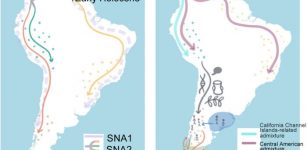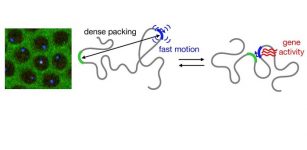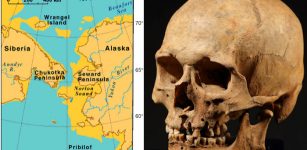Fulani: Africa’s Pastoralists Traced To Green Sahara Period,12,000–5,000 Years Ago
Eddie Gonzales Jr. – MessageToEagle.com – Researchers identified a genetic component in all Fulani populations, suggesting a shared ancestry possibly linked to the start of African pastoralism during the Green Sahara period, 12,000–5,000 years ago.
A Fulani woman with tent poles and part of her household on a donkey in central Mali. Photo: Viktor Cerný
The team uncovered the genetic diversity and ancestral origin of the Fulani, one of Africa’s largest pastoral populations. These people’s complex genetic ancestry with influences from both North and West African groups, was shaped by historical migrations that have left a lasting impact on their genetic landscape.
Fulani populations speak languages from the Niger-Congo family and live in scattered locations across the Sahel/Savannah belt. Besides their large distribution from the Atlantic Ocean to Lake Chad, the ancestral origins of the Fulani people are unclear. This is mainly because the vast majority of the Fulani have a nomadic lifestyle and use temporary camps or mobile tents, which do not leave traceable archaeological evidence.
“Even though the Fulani are a huge population group of more than 40 million people, they are still largely underrepresented in genomics research. Therefore, this study has important implications for our understanding of the Fulani population’s history in particular and human diversity in Africa in general,” says Cesar Fortes-Lima, a population geneticist at Johns Hopkins University and Uppsala University and first author of the study.
The study, published in the American Journal of Human Genetics, was conducted in seven African countries from the Sahel belt in collaboration with Fulani communities and local researchers.
Picture of Fulani (or M’Bororo) camp in Niger, near Lake Chad. Credit: Viktor Cerný
The researchers collected biological samples and anthropological information from over 460 Fulani participants across 18 locations in Africa.
Genetics shaped by interactions with different local groups
The team found correlations between culture, geography and genetics matching the distribution of Fulani groups.
“Our analysis revealed genetic differences between local Fulani populations following a west-east cline, highlighting their complex genetic history, which was shaped by interactions with different local groups and various demographic events,” says Mame Yoro Diallo, a PhD candidate from Charles University in Prague, who was involved in the study.
The study underscores the importance of the lifestyle of Fulani populations. Their subsistence strategies as nomadic pastoralists have influenced the genetic diversity among local Fulani populations along with their geographic distribution.
Can be traced back to the Green Sahara period
The authors also revealed a genetic component closely associated with all studied Fulani populations, suggesting a shared ancestral component possibly linked to the beginning of African pastoralism during the Green Sahara period, 12,000–5,000 years before the present.
“Comparisons between genetic data of Fulani and ancient individuals identified the presence of a genetic component in all Fulani populations associated with ancient groups from North Africa, providing additional insights into their deep genetic history and ancient contacts, particularly with ancient groups related with modern Moroccan populations such as the Berber,” says Carina Schlebusch, an evolutionary geneticist at Uppsala University and senior author of the study.
Furthermore, Fulani populations have shown genetic contributions from other African groups from western, central and eastern sub-Saharan Africa.
“During the last 500 years, the trans-Saharan trade could also have played a pivotal role in facilitating the development of extensive trade networks for the Fulani, further allowing the spread of pastoralism in Africa in different directions across the Sahel belt and beyond,” says Schlebusch.
Paper
Population History and Admixture of the Fulani People from the Sahel. Fortes-Lima CA, Diallo MY, Janoušek V, Černý V, and Schlebusch CM. American Journal of Human Genetics. 2025 112(2). DOI:10.1016/j.ajhg.2024.12.015
Written by Eddie Gonzales Jr. – MessageToEagle.com Staff Writer












